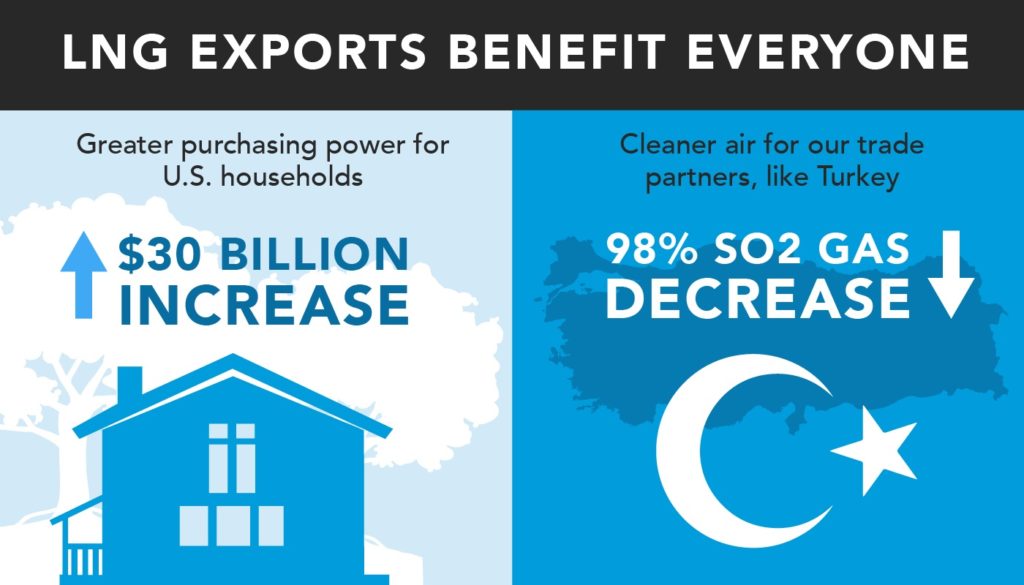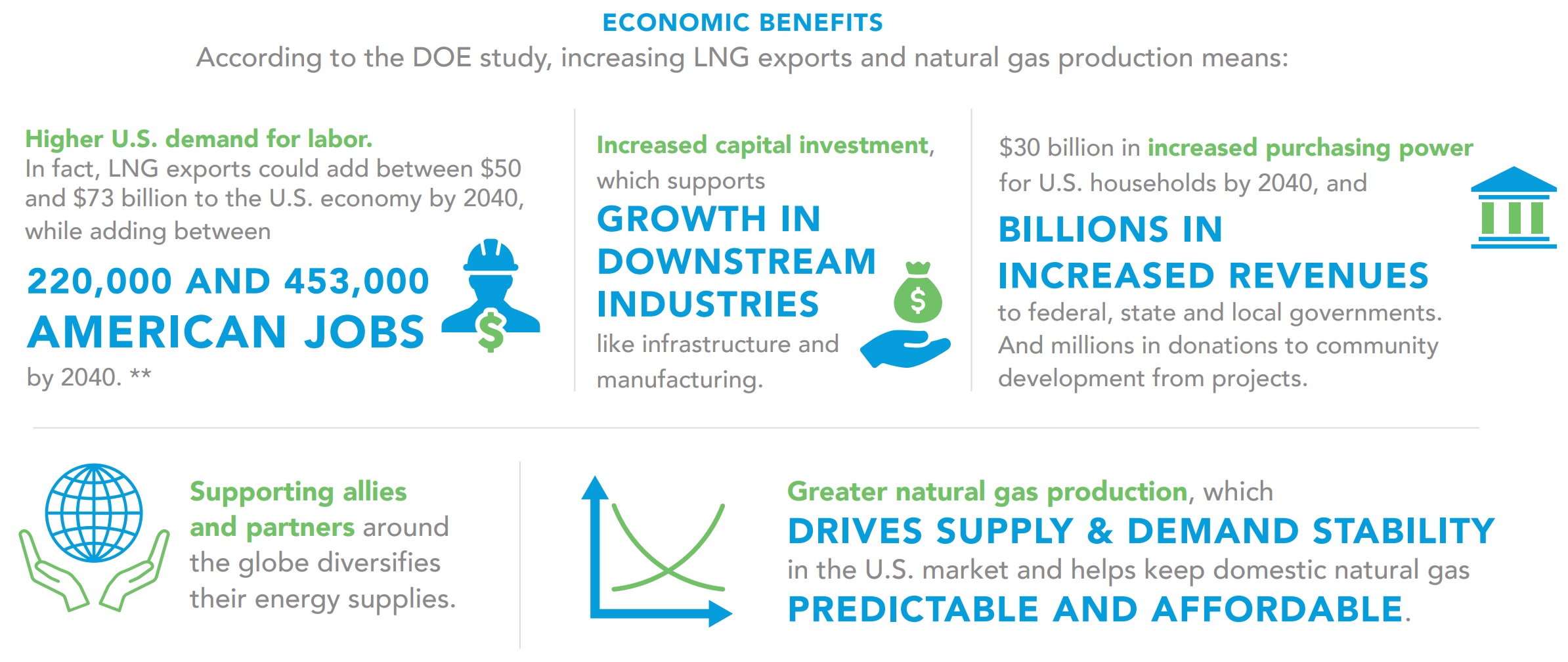To learn more about the natural gas market this winter, check out NGSA’s 23rd annual Winter Outlook examining the five factors driving the natural gas market this winter, the economy, weather, demand, supply, and storage.
The abundance of clean-burning natural gas in the United States is a source of tremendous economic benefits for our country, directly supporting thousands of jobs and improving household disposable income, as well as contributing to state and local revenues that support schools and transportation and jobs training programs.
Exports to the growing global market for LNG are a net benefit for the U.S. economy, household purchasing power, and for natural gas consumers. Learn more about the global LNG market and the benefits to the U.S. economy here.
LNG export facilities represent tens of billions of dollars of investment in communities across the nation. Learn more about the scope of U.S. LNG export infrastructure and its economic impact here.

There are currently seven export terminals representing billions  of dollars in investment in communities across the country, with more projects under construction or approved for construction.
of dollars in investment in communities across the country, with more projects under construction or approved for construction.
- For example, the Cove Point LNG project in Maryland represented the largest infrastructure project in the state’s history, supporting more than 10,000 jobs and $4 billion dollars in investment.
- LNG export projects offer more than investment in the facility, they provide investment in the local economy through tax revenue and increased economic activity in the area.
Learn more about U.S. LNG Export Projects and the surrounding communities at the resources below.
The abundance of clean-burning natural gas in the United States is a source of tremendous economic benefits for our country, directly supporting millions of jobs and improving household disposable income, as well as contributing to state and local revenues that support schools, transportation, jobs training programs and more.
LNG exports compound the economic impact of natural gas at home by producing high paying jobs, tax revenue, and investment in communities across America.
According to a 2019 study macroeconomic study conducted by NERA for the Department of Energy:

